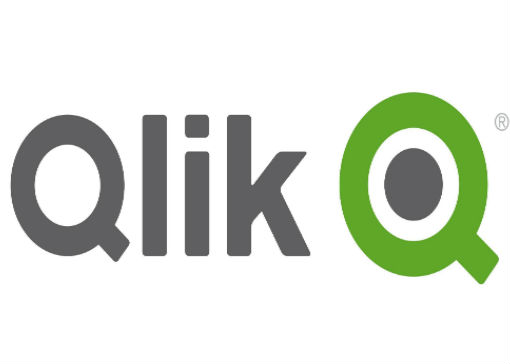Data is now everywhere–in every industry, economy, organization, and consumer of digital technology. Anyone can easily access a wide trove of data from various sources, from the Internet and social media, to smartphones, cameras, scientific equipment, and more. As more data sources are created every day, many organizations find themselves struggling to keep up with the increasing amount of data inside their companies and failing to bring their data together to produce meaningful insights.
To address the challenge of data growth explosion as well as efficiently manage and normalize data across the enterprise, organizations must leverage data visualization. As an integral part of the modern business intelligence, data visualization enables enterprises to make smart decisions by understanding the patterns they can extract from real-time, big data collection. Through data visualization, organizations can change the way they interpret and act on big data and convert it into meaningful stories that help drive businesses forward.
SourceForge had the chance to speak with James Fisher, the Senior Vice President of Strategic Marketing at Qlik, to talk about the importance of data visualization in business intelligence. Fisher also shares how Qlik’s leading data analytics platform helps organizations visualize and explore information, generate insight, and make informed business decisions.
Q: Can you share with us a brief overview of your company (year founded, size, solutions, etc.)?

James Fisher, the Senior Vice President of Strategic Marketing at Qlik
A: Qlik was founded in Lund, Sweden in 1993, and is currently headquartered in Radnor, PA. The company serves over 48,000 customers in 100 countries, with over 1,700 partners across the globe.
All of Qlik’s products are based on the patented Associative Engine, which allows users of all skill levels to explore information freely without the limitations of query-based tools. Qlik provides a solution both on-premise and in the cloud for all of an organization’s data and analytics needs via our flagship product Qlik Sense Enterprise, and our new enterprise data management offering through our recent acquisition of Podium Data.
Specifically, of interest for the developer community, Qlik recently announced the general availability of Qlik Core, a platform for building new classes of data-driven applications leveraging the Qlik Associative Engine. Qlik Core delivers the Qlik Associative Engine through a developer-focused model purpose-built for the cloud, leveraging Linux and a containerized approach for the engine, along with supporting open APIs and open source libraries to create new data-driven applications. Developers can now quickly and easily embed analytics at the network edge or within any analytic workflow along a process, be it physical manufacturing elements, IoT devices, logistical supply chain touchpoints, or financial transaction points.
Q: What problems does Qlik seek to solve? Who are your current customers or clients?
A: Qlik is on a mission to create a data-literate world, where everyone can use data to solve their most challenging problems. Qlik serves a wide range of customers across every type of industry, and supports a full range of analytics use cases. Those include self-service visualization and exploration, guided analytics apps and dashboards, custom and embedded analytics, mobile analytics and reporting, all within a governed multi-cloud architecture. Qlik offers analytics capabilities for every user, including associative exploration and search, smart visualizations, self-service creation and data preparation, geographic analysis, collaboration, storytelling and reporting, fully interactive online and offline mobility, and a new insight advisor that generates the most relevant charts and insights using AI and machine learning.
Of special focus for Qlik is the developer community, who in many cases are designing analytics offerings for the most cutting-edge IoT and big data applications. Along with our investment in Qlik Core, Qlik has created Qlik Branch, a community network of over 30,000 developers using data to visualize and solve complex problems.
Q: What exactly is data visualization? And how does it amplify business intelligence?
A: Data visualization was a key benefit of the initial generations of business intelligence, and enabled users to more clearly see data and relationships between information. However, most of the stand-alone data visualization tools are limited in their ability to dynamically blend multiple data sources and scale to enterprise-level user needs. In today’s world of increasing data volumes and the need to create a truly agile, data-driven organization, data visualization alone is not enough.
We see the definition of business intelligence evolving to be more about an overall approach to data and analytics, where data democratization brings insights to every user. Data visualization then becomes the front end to the user experience.
In order for those visualizations to be of greatest use, they must be married to a modern analytics platform. One where users can rapidly combine any number of data sources, regardless of size, so they can freely explore data in any direction through smart visualizations. This approach takes away the previous limits of linear exploration within partial views of data, which slowed down users with cumbersome data preparation using interactive selections and global search.
 Q: Data visualization has changed how businesses interpret and act on data, allowing them to directly interact with the information that is needed to make smarter decisions. What is your advice for enterprises that have yet to unlock the power of data visualization?
Q: Data visualization has changed how businesses interpret and act on data, allowing them to directly interact with the information that is needed to make smarter decisions. What is your advice for enterprises that have yet to unlock the power of data visualization?
A: Enterprises are fully aware that data is essential to their success, and in most cases have an initial set of analytics and visualization tools in place. However, in order to unlock the true power of their data, enterprises need to execute a strategy that combines data management and analytics. Understanding all of their data enables the organization to better deliver that data for analytics, which then sets the stage for delivering insights at scale across the organization. This need was the driver behind our recent acquisition of Podium Data. We see a world where combining enterprise data management with a modern analytics platform will enable enterprises to truly scale insights to every user in their organization.
Q: What do you see as some of the biggest data visualization challenges facing modern enterprises today? And what specific measures do organizations need to take in order to make the most of their visual analytics tools?
A: The biggest challenges are data quality, data access, and data literacy. Enterprises need to have a better and deeper understanding of what data they have and its quality in order to maximize its value through analytics. At the same time, bringing more data to users without their being able to read, understand and argue with that data limits the organization’s ability to drive truly drive their business through data and insights. Qlik is addressing the entire spectrum of these needs, starting with Podium Data and our analytics platform, all the way through our free data literacy courses that we offer to anyone interested in improving their abilities to work with and benefit from data.
Q: As the leading data analytics platform and the pioneer of user-driven business intelligence, how can Qlik help organizations visualize and explore information, generate insight, and make informed decisions? Can you provide us with sample use cases?
A: Simply put, Qlik helps organizations do more with their data and transform the way they do business. By leveraging our associative engine and platform, enterprises can see more easily the hidden relationships and meaning in all of their data – not static reports or visualizations on siloed sections of their data. With our advanced capabilities around multi-cloud and big data, we are bringing more data into the analytics realm than ever before for enterprises. And with our augmented intelligence capabilities, we are guiding users along their data exploration journey to help quickly and more easily surface hidden meaning in the data and move users to deeper insights and more targeted outcomes.
Customers are truly transforming the way they operate through Qlik. A few examples:
- Avon and Somerset Constabulary is one of the largest police forces in the UK, with 5,500 people working for the organization, including 2,700 officers. Their team deployed Qlik to visualize data through apps across the entire organization, from chief officers through to officers on the ground, sharing a wealth of information including live time demand, officer availability, officer workloads, suspect management and reach insight to support problem-solving. Qlik has been invaluable in identifying and managing its highest risk offenders, most vulnerable people and high demand locations.
- Condé Nast. Qlik is helping Condé Nast deliver robust insights to both internal stakeholders around company performance, as well as fuel data-driven products for clients. The use of a unified data visualization infrastructure delivers the insights needed for Condé Nast to produce world-class experiences for 120 million consumers across its industry-leading print, digital and video brands. This includes understanding sales performance across brands to visualizing content consumption to optimizing ad operations, saving hundreds of hours per week on manual reporting and contributing to a data-driven culture across the organization.
- NSW Health, the largest healthcare system in Australia and one of the largest in the world. Qlik has been used across NSW Health since 2012, helping develop their Activity Based Management (ABM) Portal. This portal is the platform that provides a transparent environment of clinical and cost data to support better value care in NSW, enabling a complete view of the entire patient journey through health systems. A version of the ABM Portal has been adopted by the peak health pricing body as the National Benchmarking Portal, transforming how health services compare efficacy and cost of care nationwide.
- Ottawa Paramedics has standardized on Qlik’s platform to transform its patient care ecosystem, linking its 911 emergency dispatch, ambulance fleet management, and patient transport systems through Qlik to bring the entire emergency response chain together with timely access to data that is set to improve response times, resource availability and patient care.
Q: What makes Qlik unique from other visual analytics and business intelligence platform on the market?
 A: Qlik’s Associative Engine allows people to explore and analyze data freely, from many sources, without the limitations of query-based tools. Relational databases and SQL are old technologies that were not designed for modern analytics, yet other tools rely on them as their core architecture – resulting in restricted linear exploration on only partial subsets of data. This greatly limits insight and creates “ask, wait, answer” cycles.
A: Qlik’s Associative Engine allows people to explore and analyze data freely, from many sources, without the limitations of query-based tools. Relational databases and SQL are old technologies that were not designed for modern analytics, yet other tools rely on them as their core architecture – resulting in restricted linear exploration on only partial subsets of data. This greatly limits insight and creates “ask, wait, answer” cycles.
Unlike queries and databases, the Qlik Associative Engine is designed specifically for interactive, free-form exploration and analysis. It leaves no data behind, even when combining many different sources. And it allows people to search, explore, and pivot their analysis in any direction based on what they are seeing, exposing both associated and unrelated data after each click. This allows people to quickly spot insights and ask new questions, without having to go back to the experts or wait for answers.
Q: Looking ahead, what are some market trends and technologies you see on the rise in the analytics and business intelligence space, and how is Qlik addressing these?
A: We see three key trends in the analytics space, all which Qlik is directly addressing through our platform and services.
- Executive leaders such as CDOs and CIOs, alongside their business users, will embrace the need to boost data literacy – both through education and Augmented Intelligence on steroids. Cognitive learning through increased data literacy, when blended with associative technology and optimized interfaces such as Qlik’s, will drive the enterprise-wide move to data-driven cultures in both approach and action.
- Enterprises will embrace the need to start with a data strategy that’s analytics-ready. This means having an end-to-end enterprise data management and analytics strategy that takes data from raw to ready to insights, which includes a governed enterprise data schema accessible via catalogs. The blending of Podium Data’s enterprise data management catalog and index, Qlik’s Associative Big Data Index and the Qlik analytics platform enables this enterprise data journey. Putting this in place will enable enterprises to truly embrace the democratization of data.
- Analytics will be embedded throughout the organization, from the edge to the point-of-decision. Leading analytics platforms will enable real-time data and insights to be embedded in apps, processes, devices, and anywhere data can be leveraged for an advantage. This is the essence of Qlik Core, which enables our associative engine to be inserted anywhere data exists for cutting edge IoT and big data applications.
Q: What can customers expect from Qlik in the future? Are there any new product offerings or developments customers should look forward to?
A: Customers can look forward to Qlik continuing to further expand our capabilities across multiple areas, including big data, multi-cloud, augmented intelligence and machine learning, and enterprise data management. These enhancements will all support Qlik’s mission to supply enterprise customers with end-to-end data management and analytics solutions that streamline the enterprise data journey from raw data source to end-user insights.
About Qlik
Qlik is a leader in the visual analytics market, delivering smart and innovative solutions for guided analytics applications, self-service data visualization, embedded analytics, and reporting. The company empowers organizations by enabling everyone to see the whole story that lives within their data. Qlik delivers three core solutions: Qlik Cloud, a growing portfolio of SaaS apps; QlikView, a proven guided analytics and dashboarding solution; and Qlik Sense, the next-generation visual analytics platform.
Bio – James Fisher, Senior Vice President of Strategic Marketing at Qlik
In his role as SVP of Strategic Marketing at Qlik, James is responsible for leading the team that helps drive Qlik’s vision, the product and innovation strategy, messaging, thought leadership and go-to-market strategies. James has two decades’ experience in global software and consulting businesses focusing on analytics, performance management, finance, and mobile solutions. Prior to joining Qlik, he ran Product Marketing for analytics, mobile, and finance solutions at SAP and previously held various marketing and consulting roles at BusinessObjects, Cartesis, and PwC.
